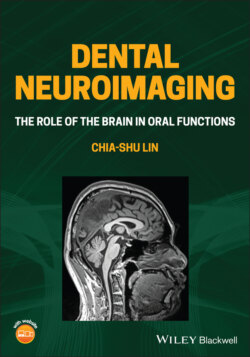Читать книгу Dental Neuroimaging - Chia-shu Lin - Страница 28
1.2 What Is Neuroimaging? 1.2.1 Introduction
ОглавлениеIn Section 1.1, we have highlighted a significant overlap between dentistry and brain science. Though the two fields are closely linked from a functional perspective, there exists a vast difference between research approaches of the oral cavity and those of the brain. Dentists can visually examine the oral structure, and oral functions can be quantified with a chairside set of assessments. In contrast, brain functions and mental status, sometimes metaphorized as a ‘black box’, can hardly be examined directly at the chairside. Therefore, a pivotal step to facilitate the investigation of the brain is to develop the technology for quantifying brain structure and functions. Neuroimaging, defined as a non‐invasive approach of ‘visualizing the central nervous system, especially the brain, by various imaging modalities’ (MeSH 2012), is such a technological breakthrough that revolutionizes the research approaches of the brain.
A common myth is that neuroimaging or ‘brain scan’ would be a kind of ‘modern magic’. The impression is strengthened by some sci‐fi movies, where ‘peeking into the brain’ is taken as an icon of something futuristic. Contrary to the popular myth, the term ‘neuroimaging’ has been adopted as a common method for regular clinical investigation and research. In the following sections, we outline the primary methods of neuroimaging approaches in brain science, and their roles in brain science and practical implications in dentistry are highlighted.
